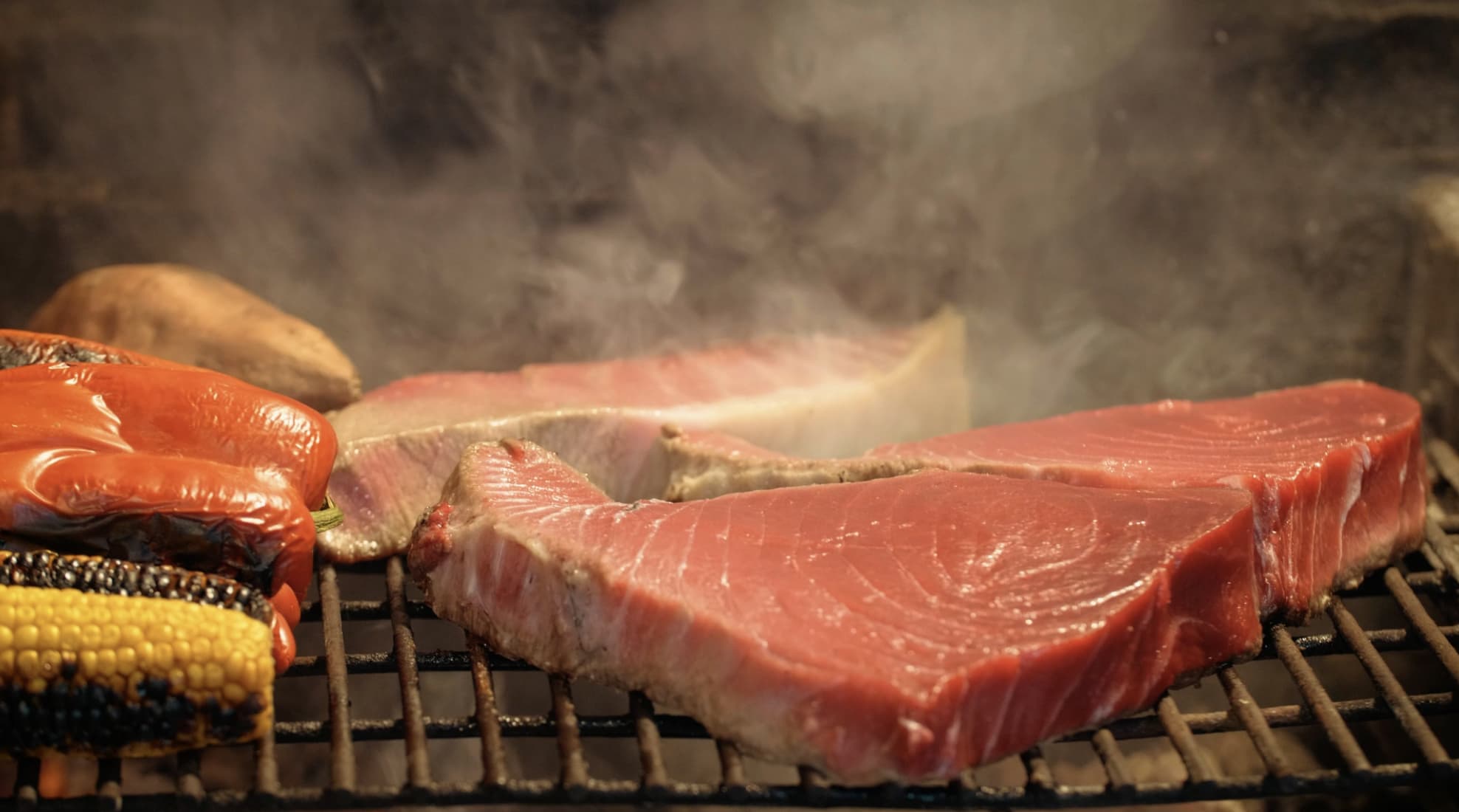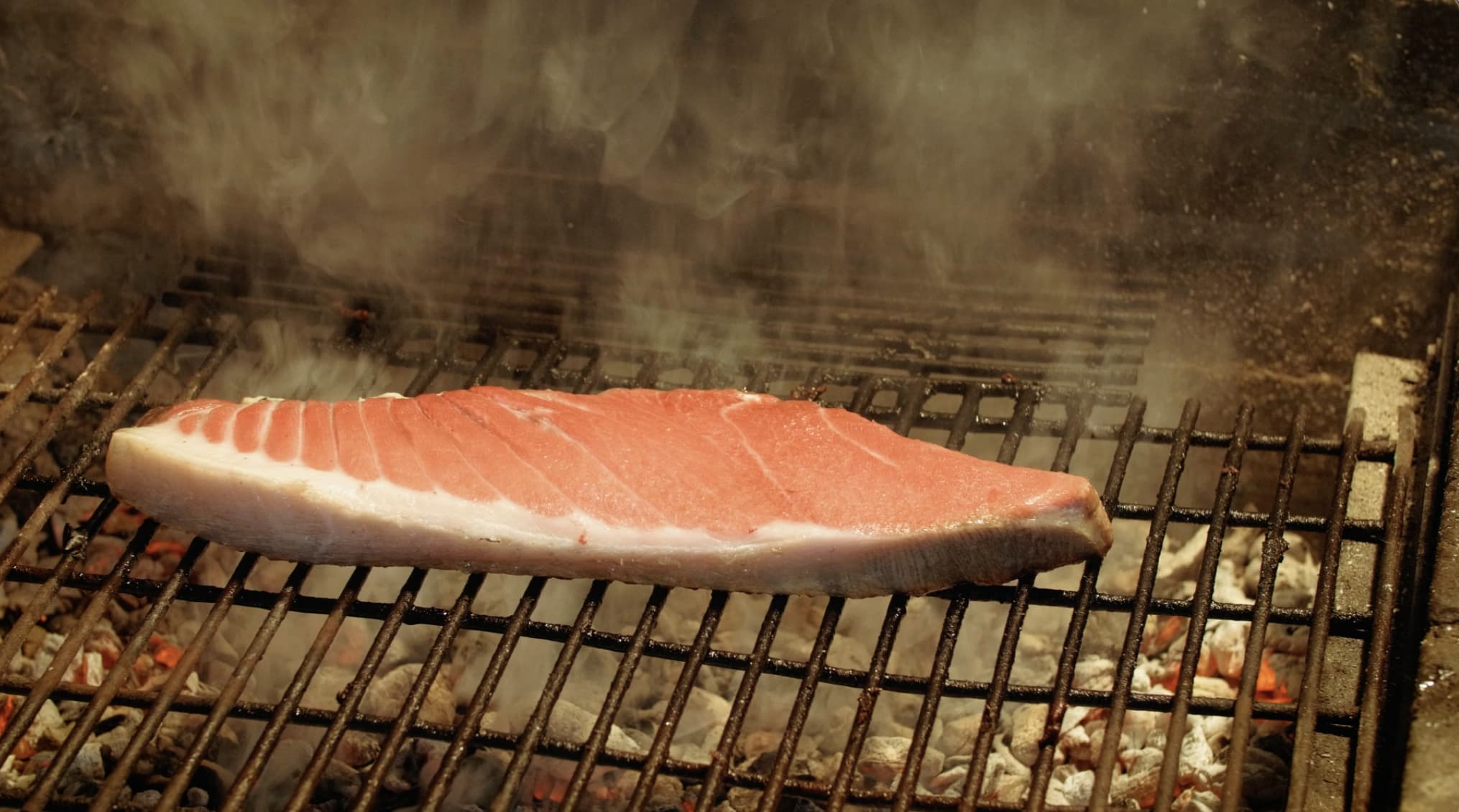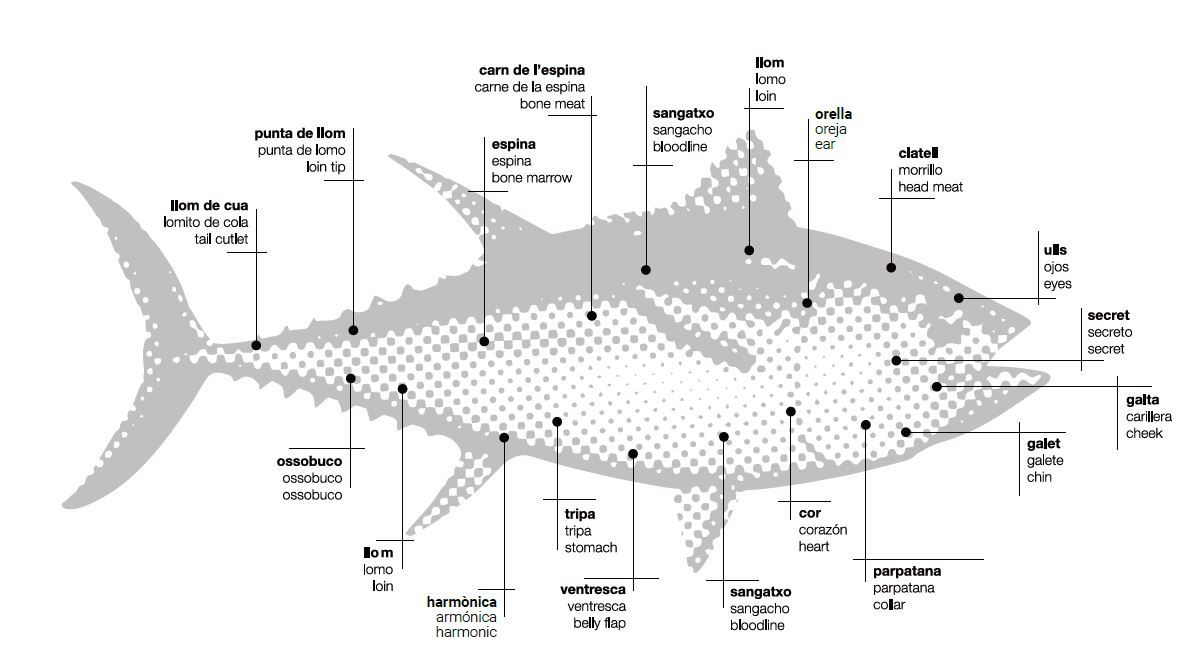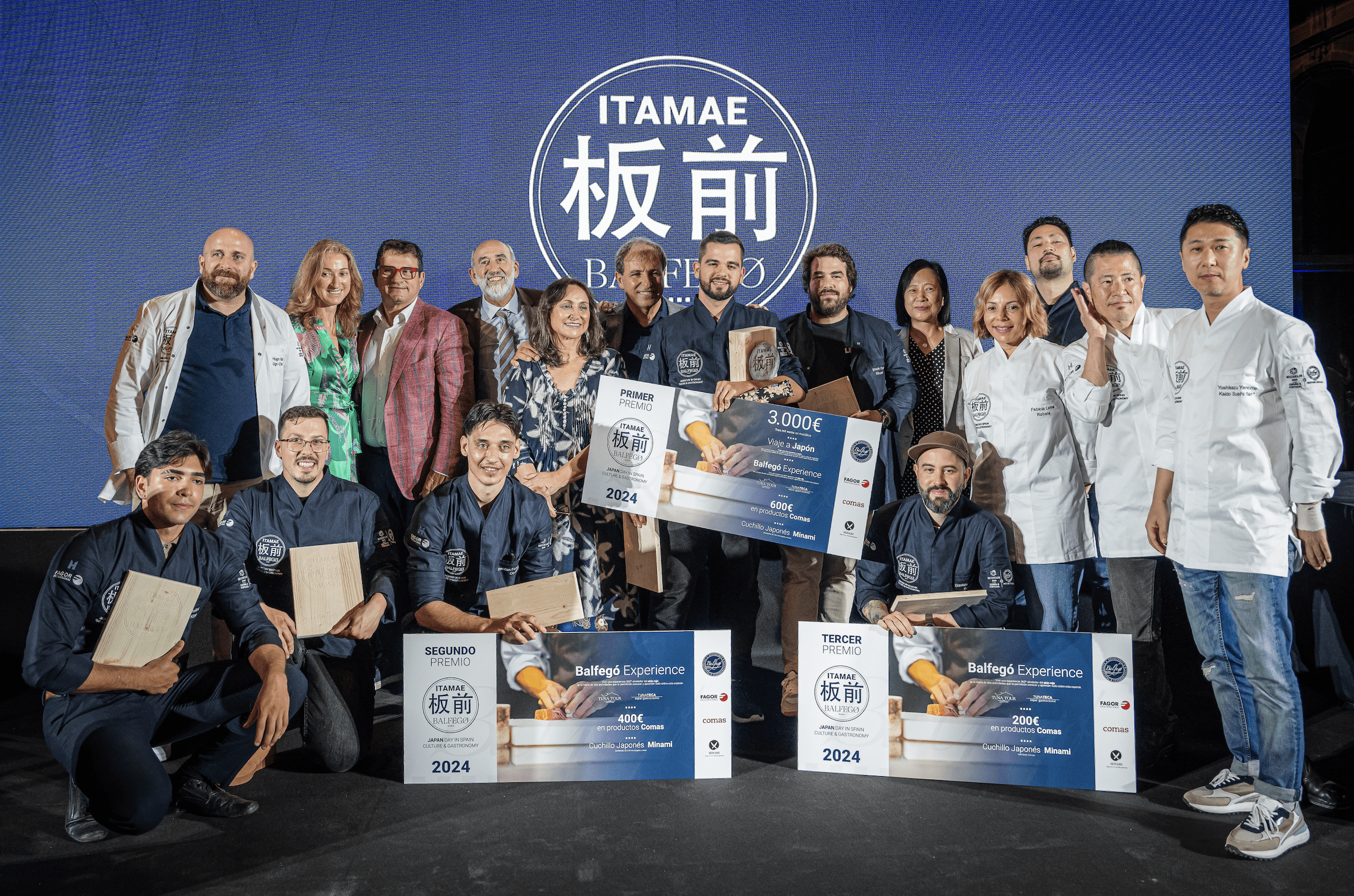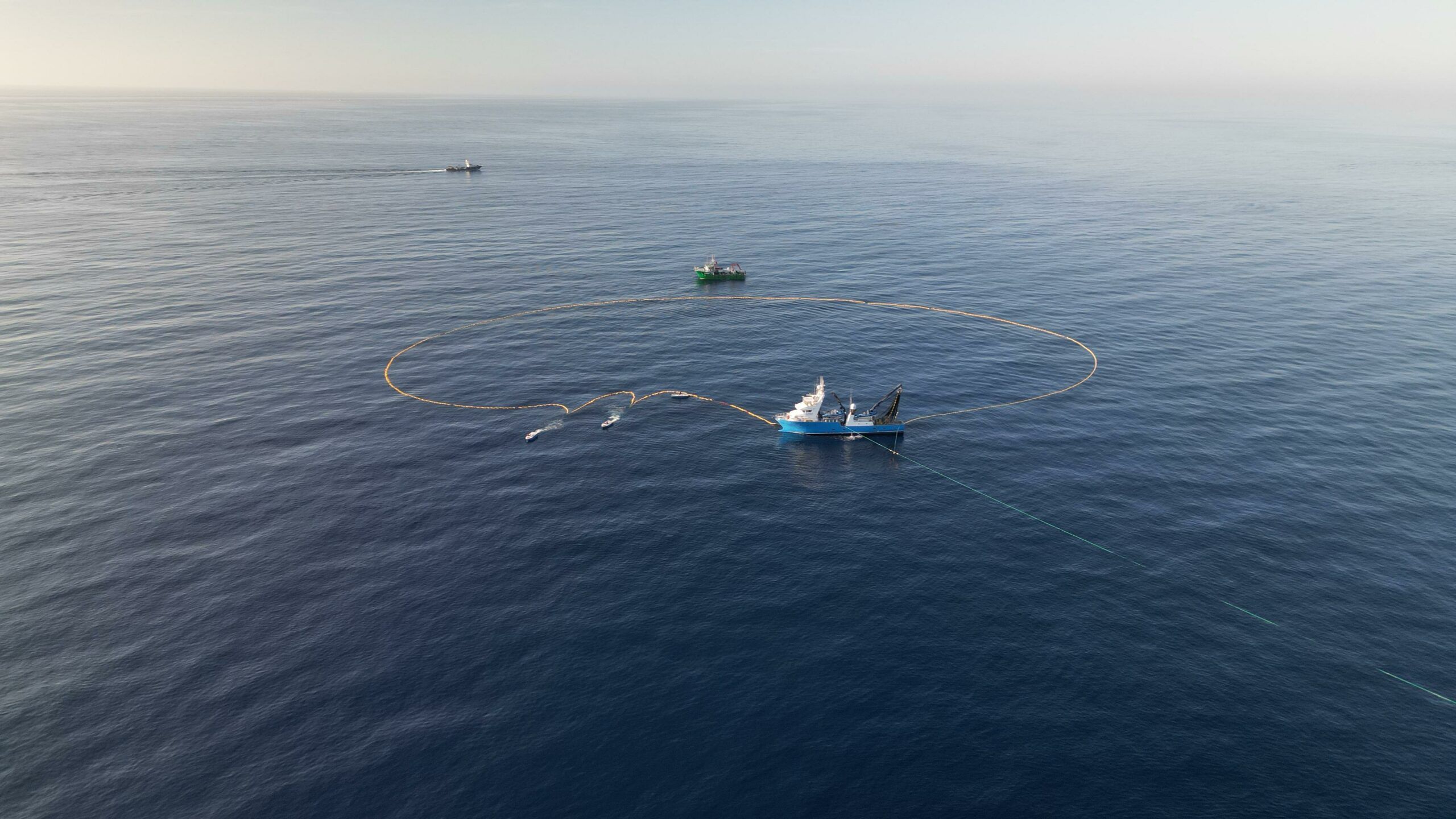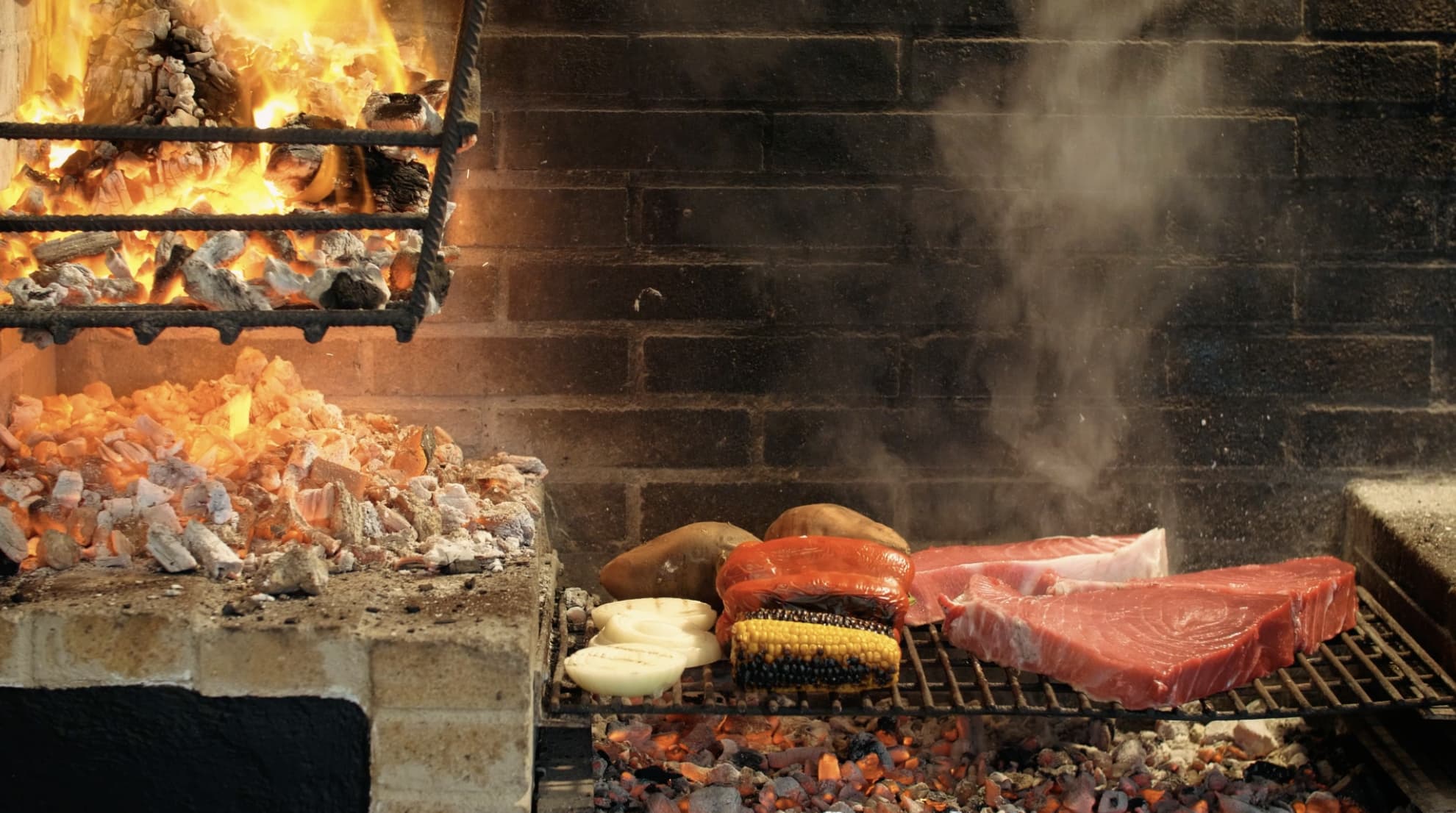
Grilled tuna, the new feature at steakhouse restaurants
Steakhouses are true temples of meat. These restaurants specialize in different cuts of beef that emerged in the United States in the late nineteenth century and caused such a furor that they’ve managed to reach every city in the world. Now they are looking to return to the scene with new menus and one of the most successful dishes is undoubtedly grilled tuna.
Grilled meat vs. grilled bluefin tuna
Steakhouses are starting to include bluefin tuna on their menus. Those that dominate the grill know that the fat of a food is an advantage when grilling and one of the fattiest fish is Balfegó bluefin tuna, which guarantees between 8 and 12% of fat in each piece. This is an optimal and highly valued percentage in the United States. This high fat percentage ensures a show when cooking; watching the fat melt, bubble in contact with the heat, and melt with each piece is a guarantee of definite success.
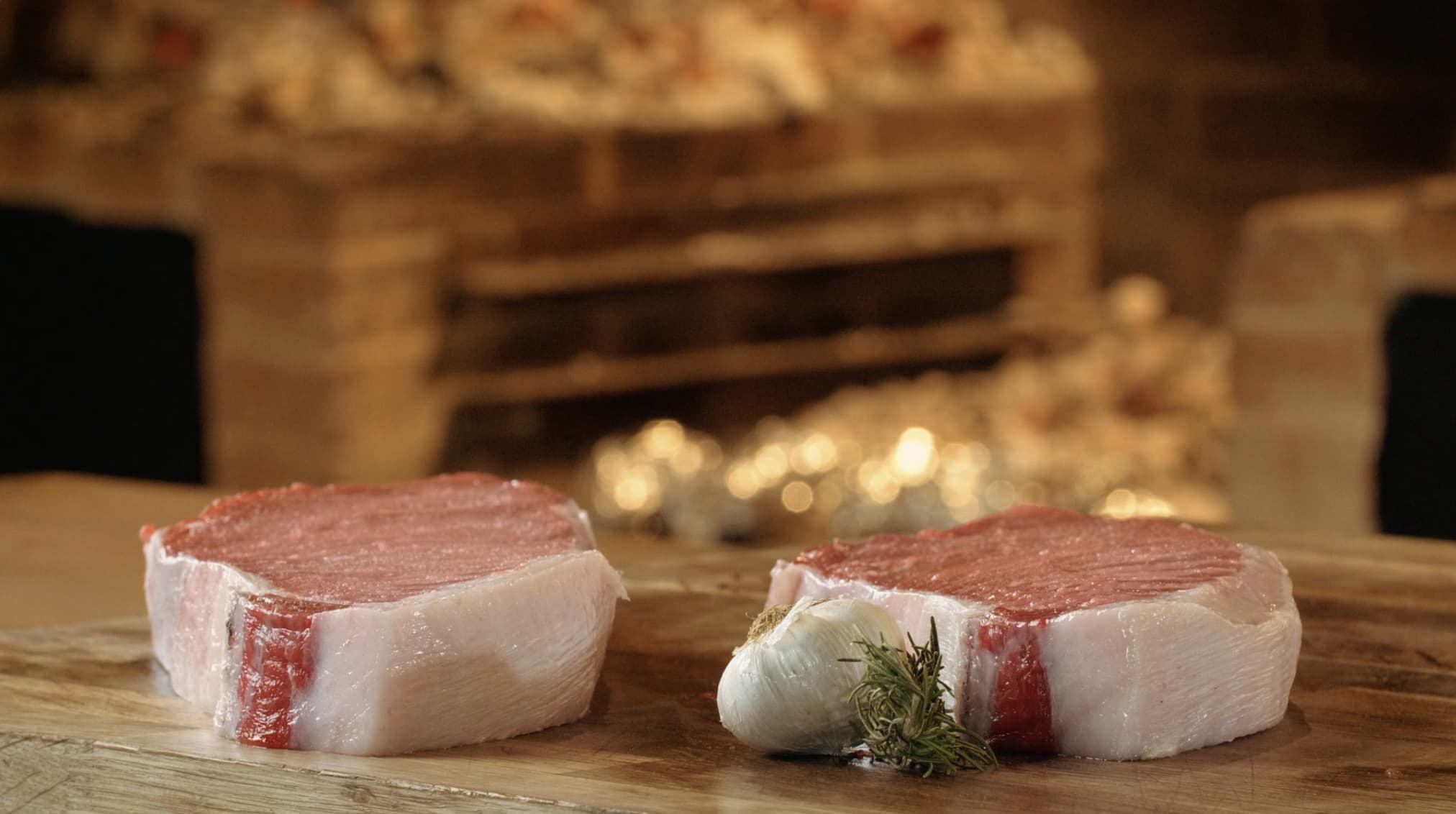
In fact, bluefin tuna is the only fish in the sea that can compete with the big boys, like wagyu, the best meat in the US. It’s not even a fair competition in terms of flavor, texture, tenderness or size; we can make tuna steaks of one or even four kilograms.
In addition, another way to convince chefs and restaurant owners to introduce grilled bluefin tuna is that, although it seems strange, when we cook bluefin tuna, it doesn’t smell like fish – even when we eat it. It’s just another advantage for steakhouses that want to expand their menu and meet new demands.
Grilling bluefin tuna: the best parts
The fat in bluefin tuna is what determines the flavor, the quality, and the use of each part. Like meat, tuna is also very versatile in terms of the different cuts that can be obtained from the same fish.
When grilling, tuna fat adds flavor and texture and is key when cooking. The proportion of fat is not the same in all parts; for example, the fat of a tuna differentiates the akami and the chutoro, which are the two parts of the loin.
When cooking some cuts in their own fat, it’s best to opt for these three mainly: the loin (differentiating between the akami and chutoro), the ventresca, and the morrillo.
If we have to choose one of the fattest pieces of bluefin tuna, the undisputed queen of the grill is undoubtedly the ventresca of bluefin tuna, also known as otoro (in Japanese, it means “of superior mellowness”). It’s located in the ventral part of the tuna and is the most pink and mellow cut of tuna due to its high percentage of fat infiltration.
The best cuts of Balfegó bluefin tuna for the grill
Just like with pigs, we can use the entire tuna. At Balfegó, we market more than 20 parts of the tuna and each one is very different. There’s so many that it’s actually more similar to meat.
At Balfegó, we’ve created our own system of classification for bluefin tuna. We’ve universalized some of the most surprising parts like the parpatana, osobuco, morrillo, secreto, punta de lomo, carrillera, and even the ear, the eye, and the heart. Many of these parts were previously considered “throwaways”; now, they’ve been rescued thanks to the innovation and creativity processes of Balfegó’s Department of Sustainability and Innovation. The best restaurants in the world are now working with almost twenty of the parts that we market.
Advantages of grilling bluefin tuna
Restaurants with great grilling knowledge are increasingly including parts of tuna on their menus and the combo of fatty food and embers or fire has always been successful. This way of cooking directly on the fire is something ancestral that is now evolving, thanks to the innovation of cooking professionals who dare to experiment and seek to surprise.
Grill lovers are in luck because there are more and more grill businesses that are positioned among the best restaurants in the world. A grill is able to elevate a food and enhance all its qualities, and bluefin tuna is one of the best raw materials for this.
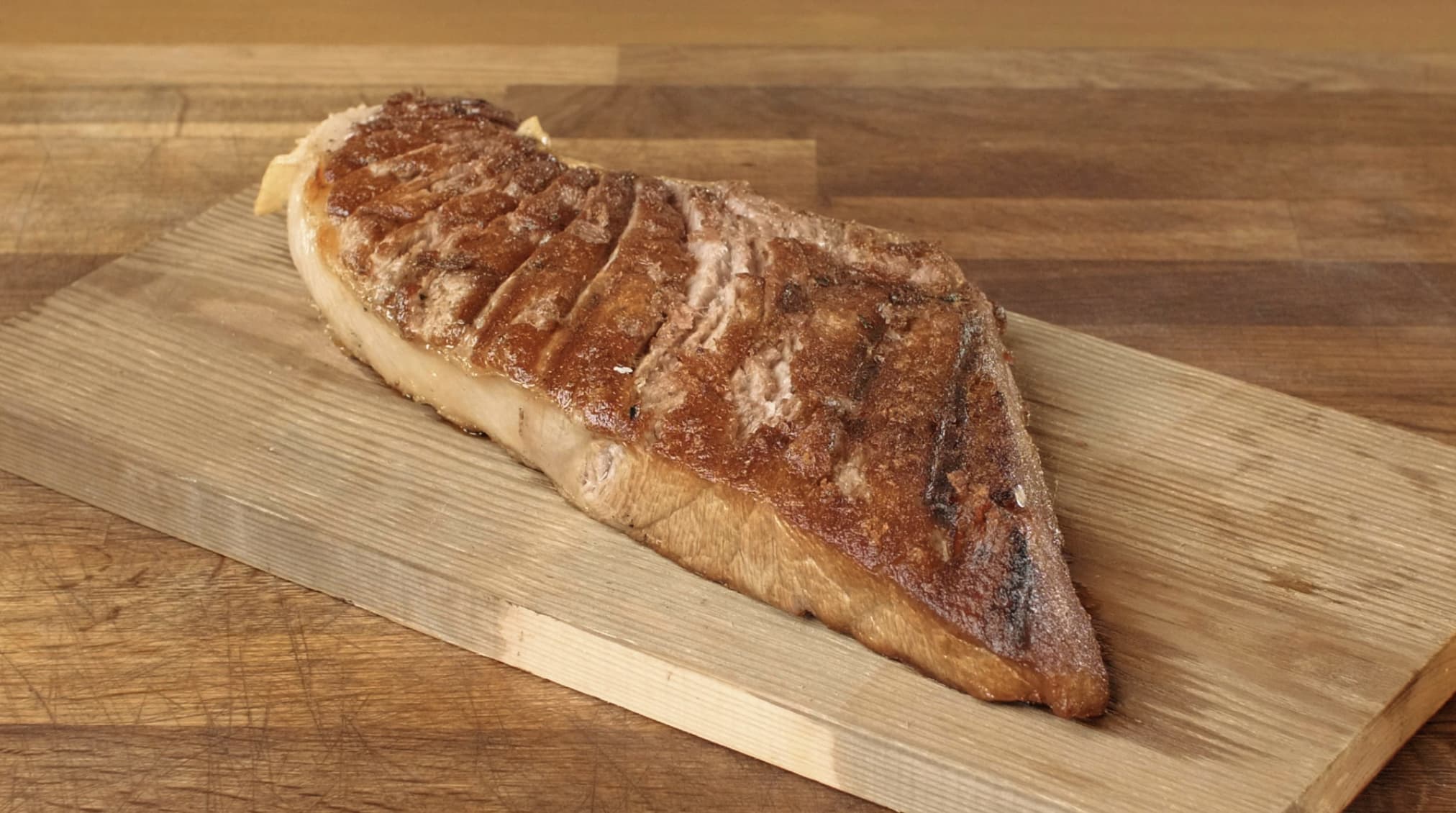
The real success of grilling lies in the fact that it is a cooking method in which wood and charcoal achieve a very different flavor from what is cooked conventionally on a stove or in an oven. Cooking with coals or fire has always been done, but mastering fire for the benefit of each dish requires a technique and skill that only few know. For this reason, some chefs continue to experiment with grilling to generate new flavor experiences and surprise their customers.
Grilling consists of a cooking technique in which direct dry heat is applied to the food; the heat comes from the natural embers. As it does not mix with liquids, any meat such as grilled tuna preserves its entire flavor and that’s why chefs are increasingly resorting to this technique to include fish in their menu. It gives the food a special flavor thanks to the aroma given off by the charcoal or wood with which the grill is being heated. Together with the tuna’s own fat, it manages to create a unique gastronomic experience for the senses.
Grilled bluefin tuna’s nutritional value is surprising
Bluefin tuna has been a prominent food in the Mediterranean diet for centuries thanks to its multiple health benefits. Some refer to it as the protein of the sea; its nutritional contributions are difficult to match and its flavor is unbelievable.
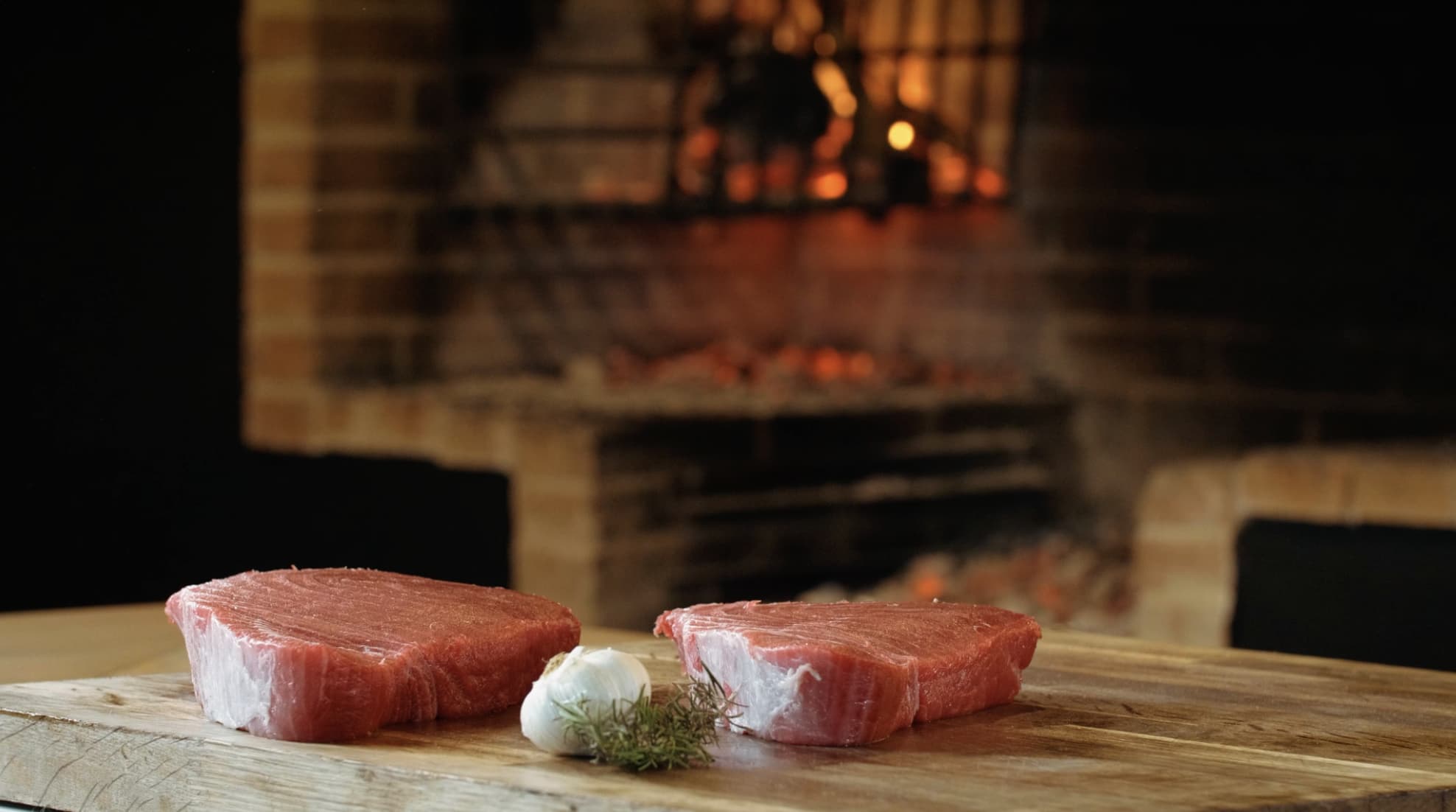
As we mentioned, bluefin tuna is considered a fatty fish, but it is a healthy fat, rich in omega-3 fatty acids, which helps lower cholesterol and triglyceride levels in the blood. It is also rich in minerals such as selenium, phosphorus, and magnesium, provides different vitamins (A, B, B3, B9, B12 and D), and is an excellent source of highly valued biological proteins.
Undoubtedly, grilled bluefin tuna is a successful option for steakhouses looking to expand their menu to satisfy their customers. There is an increasingly real demand from diners who expect to be surprised with new gastronomic experiences full of flavor and, above all, healthy food. Balfegó bluefin tuna is one of the options that is already triumphing in the best steakhouses in the United States due to the guarantee of a high percentage of fat that both diners and chefs prefer.
Are you ready to savor the best grilled fish in the world?



